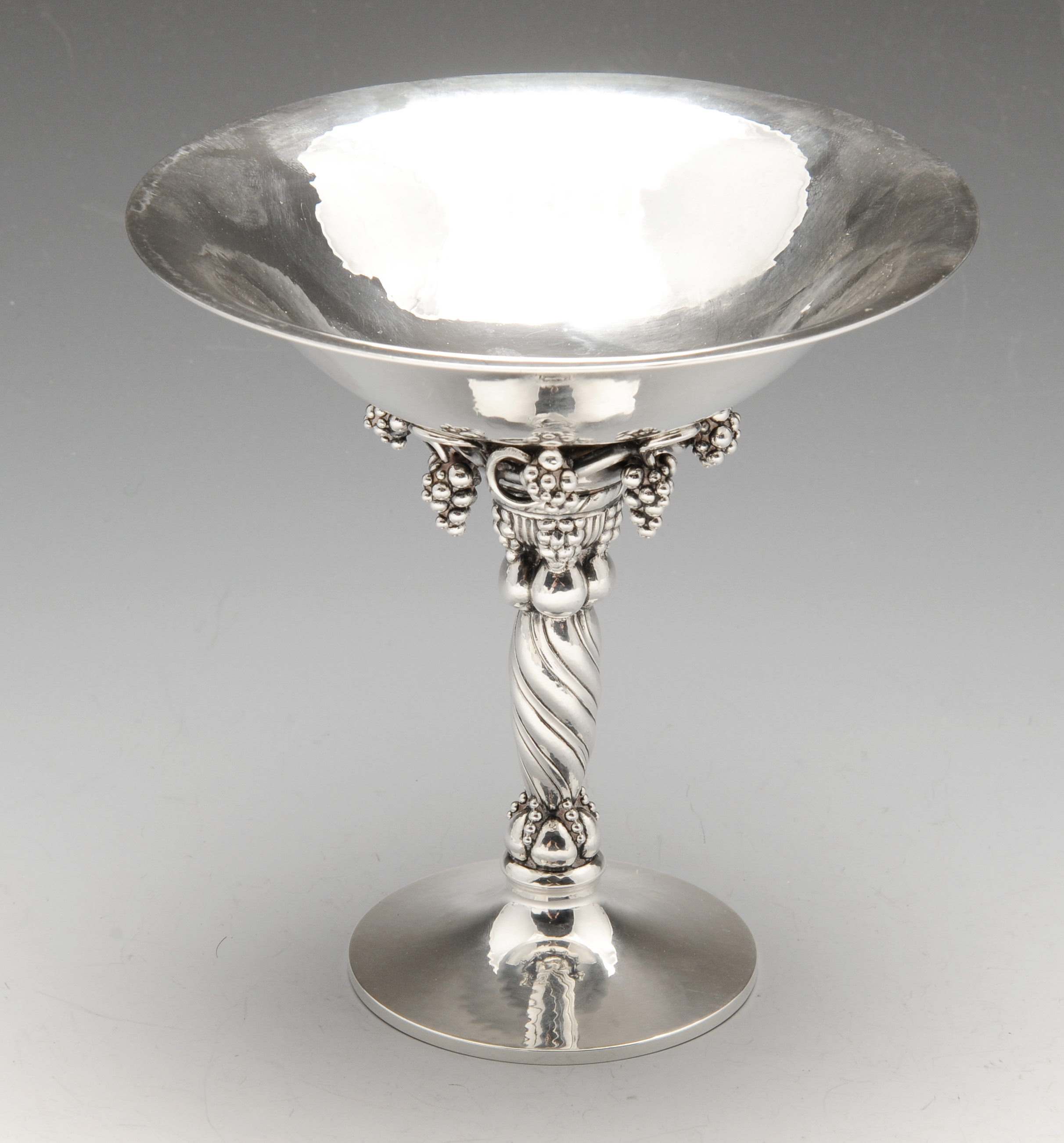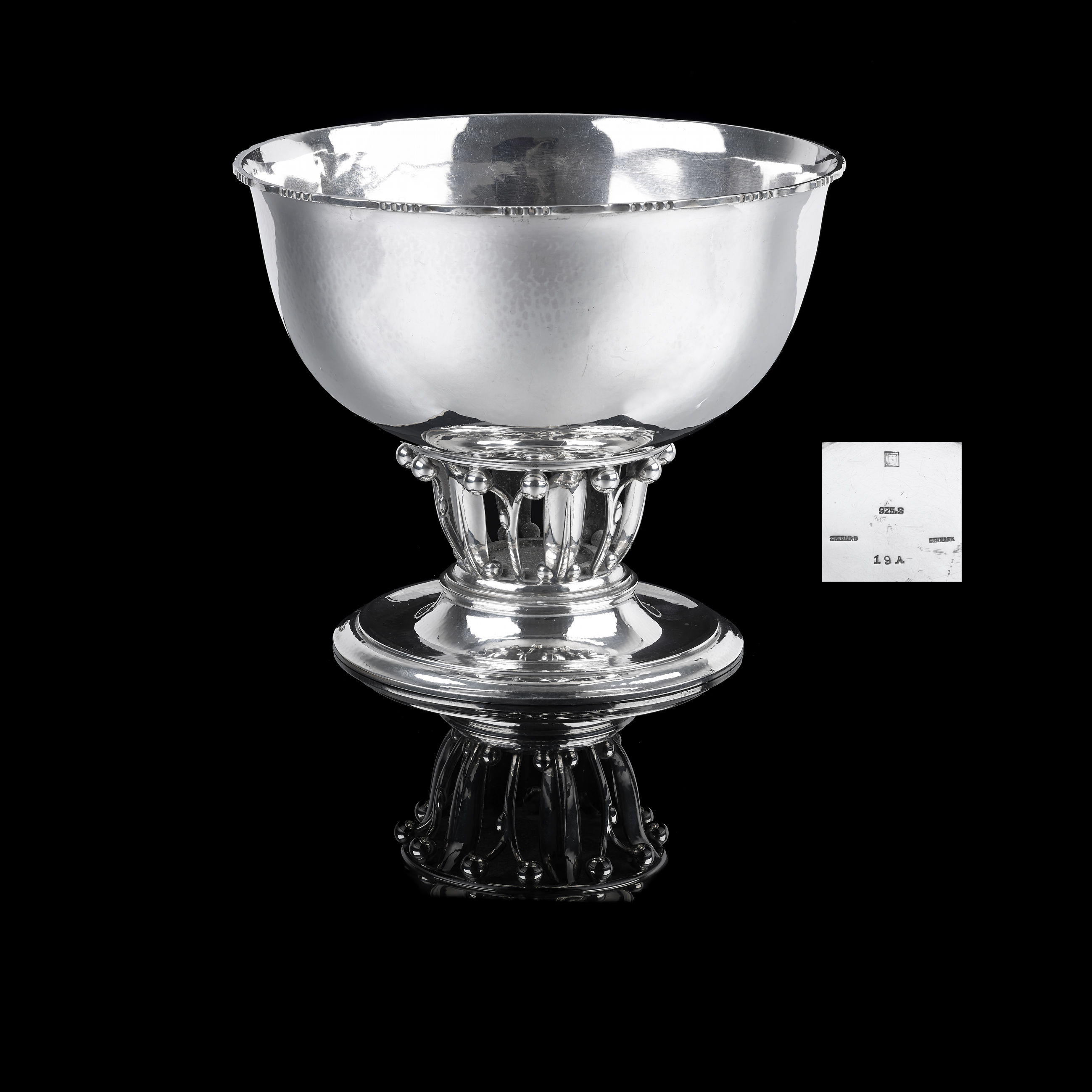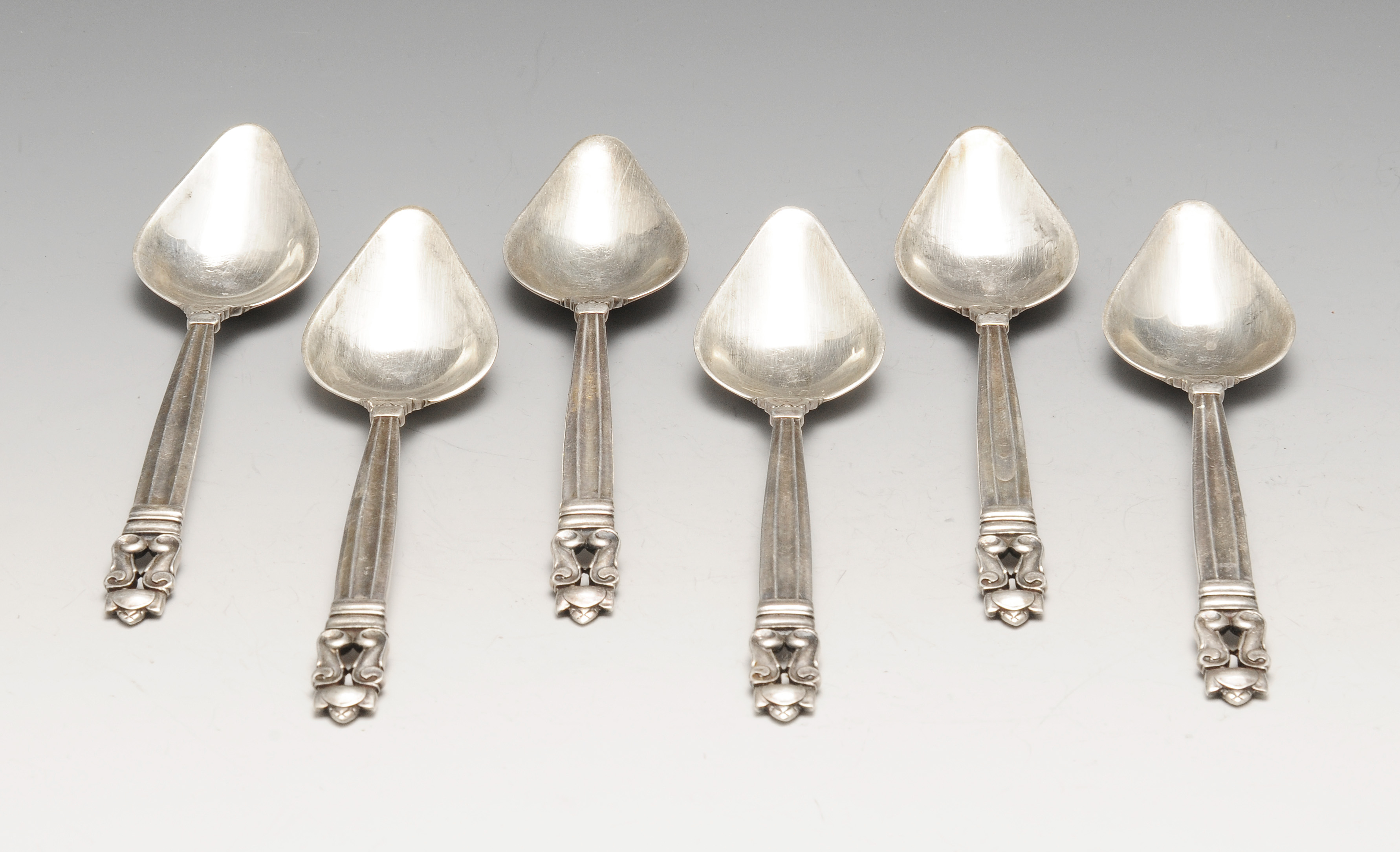The Danish silversmith Georg Jensen (1866 – 1935) regularly features in our jewellery auctions and remains a firm favourite with buyers. Our forthcoming Antiques, Silver & Collectables sale includes a selection of silverware which optimises the characteristics of the Danish design.
Georg Jensen at Auction
Firstly is Lot 215 - a modern silver grape tazza. The shallow bowl has a circular foot rising to a wrythen stem and fruiting mount (pattern number 263A). Jensen's renowned for his craftsmanship and forward-thinking designs. His style embodied many of the characteristics and influences of the Art Nouveau style. This design from 1918 demonstrates how the perfect balance of curved lines, organic structures and decorative ornament is achieveable.

A similar restraint was seen in Lot 351 from the Silver & Plated Ware sale in December 2016, sold for £1,500. This silver Louvre footed bowl (pattern number 19A) is raised above an openwork stem of stylised leaves and berries. It appears to hover weightlessly with only minimal hammered marks to the bowl.

Both examples demonstrate his ability to unite fine art with arts and crafts. The twelve individual leaves and twenty-four beads on the Louvre bowl are individually soldered on to the base. Aptly named after the Musée des Arts Décoratifs, the Musée du Louvre in Paris acquired the bowl for their permanent collection in 1914. It remains one his most iconic pieces.
Georg Jensen Flatware p
Aside from jewellery and silverware, Jensen creates flatware patterns, many of which continue to be produced today. In the upcoming sale is Lot 271 – a set of six silver Acorn pattern grapefruit spoons.

The Acorn pattern although subtle in appearance is one of the most popular amongst collectors. It is designed by painter Johan Rohde (1856-1935) for Georg Jensen. It has a remarkable likeness to the architectural ornamentation found in Ancient Greece and has never gone out production. Rohde and Jensen first collaborated in 1904 on some personal projects. Impressed by one another, the relationship continued with Rohde joining the studio in 1906. His designs although more stylized than Jensen’s were not strictly purely geometric. Instead they fell somewhere between Art Nouveau and Art Deco.
Another popular pattern is the Cactus as seen on Lot 294 – a 1970’s silver spoon in retailer’s case. Designed in 1930 by Gundolph Albertus (1887 – 1970) this pattern has elements of Art Deco in the striking lines and simplicity of form. Albertus worked for Jensen for forty years over seeing the company’s production, having begun his career as a chaser in 1905. He also designed the pattern Bittersweet and the first stainless flatware pattern Mitra in 1941, produced because of the wartime shortage of silver.

The breadth of styles which are embodied in these pieces are key to the popularity and commercial success of the company; cleverly making his designs reflect the times, Jensen set the trends for contemporary tableware. The advantage to purchasing at auction is it allows buyers the opportunity to pick up these period Georg Jensen designs which are no longer being produced, or at a fraction of the cost to compliment the furnishings of a modern home.
Upcoming Auction
If you would like more details of any of the lots in our Antiques, Silver & Collectables sale on Monday 27th February please visit www.fellows.co.uk to view our online catalogue or contact us directly and we will be happy to help.
Viewing Times
23 February 2017 10am - 4pm
24 February 2017 10am - 4pm
25 February 2017 11am - 4pm
27 February 2017 8.00am - 9.30am












